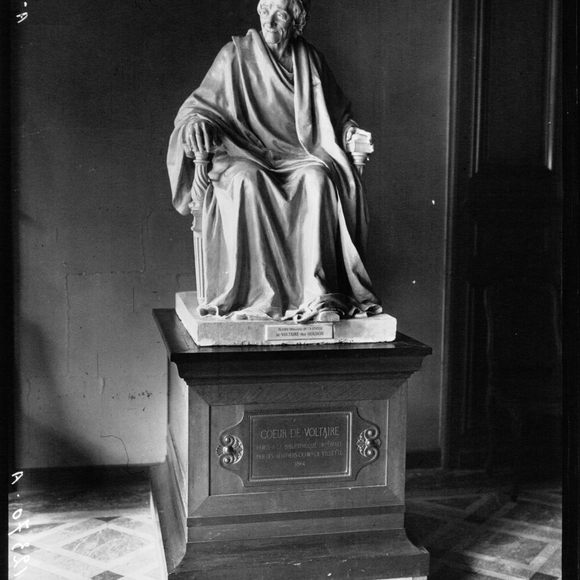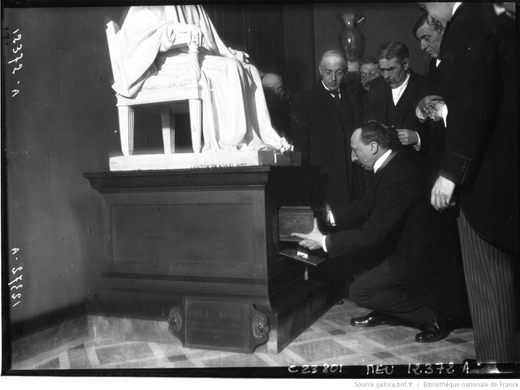AO Edited
The Heart of Voltaire
In the best of all possible worlds, everyone will get a chance to see this statue in which Voltaire's heart is interred.
Despite a tumultuous relationship with city officials during his lifetime, Voltaire died a hero. Since his passing, the respected yet polarizing reputation of the real-life François-Marie Arouet, better known as Voltaire, has solidified into that of a legitimate national treasure.
When news of the provocative author’s passing spread through Paris in 1778, tens of thousands mourned his passing in the streets. In a cruel twist of fate, Voltaire expired just one day after his long-awaited, triumphant return to Paris following one of his many periods of church and state-enforced exile from the city. France’s officials saw that Voltaire would be treated with all due respect in death – by which we mean to say, the wit’s best corporeal parts were pulled out, allowing the highest-ranking party members and royals to divvy them up amongst themselves.
To get even more specific, Voltaire’s brain and heart were boiled in alcohol to solidify them for all eternity. This, actually, was common practice at the time for someone of Voltaire’s stature. These two most important organs were relegated to identical marble likenesses of the alternately beloved and reviled Enlightenment philosopher.
His heart ended up in the hands of the Marquis de Villette, who placed it in a metal box in a room emblazoned with the words,”His spirit is everywhere, his heart is here.”After purchasing an estate at Ferney, Villette converted the heart-in-a-metal-box into a situation that involved a pyramid, a casket on a velvet cushion, and 40-some-odd portraits of Voltaire’s favorite humans in life, gazing at his dead heart.
Only after the Marquis’ son died in 1864, resulting in a legal battle with the French state, did Voltaire’s heart end up in the hands of the government. Napoleon III saw that a wooden base was affixed to the Houdun’s sculpture of the philosopher, whereupon the whole shebang was installed in France’s nascent National Library. After a few decades spent languishing in a dusty back annal, Voltaire and his heart were installed in the library’s Salon d’honneur in 1924.
To this day, visitors can make a pilgrimage to the National Library to visit the heart of one of France’s most cherished thinkers in the stunning oak-paneled room over which he presides. The only time it has moved since the early 20th century was for a brief stint in 2010, at which point the statue of Voltaire was removed due to restoration efforts focusing on the Salon d’honneur. It is said that when moving the statue this last time, Voltaire began emitting a pungent odor. By all accounts this was attributed to the heart in its base “making its presence felt,” and by the time the statue was returned to its home shortly thereafter, the plague of noxious smells had ended.
Know Before You Go
The statue has been moved to the lower level of the University of Medicine (where the Statue of Death also resides) for conservation after repeated vandalism. The area is only open to students and faculty at this time.
























Follow us on Twitter to get the latest on the world's hidden wonders.
Like us on Facebook to get the latest on the world's hidden wonders.
Follow us on Twitter Like us on Facebook